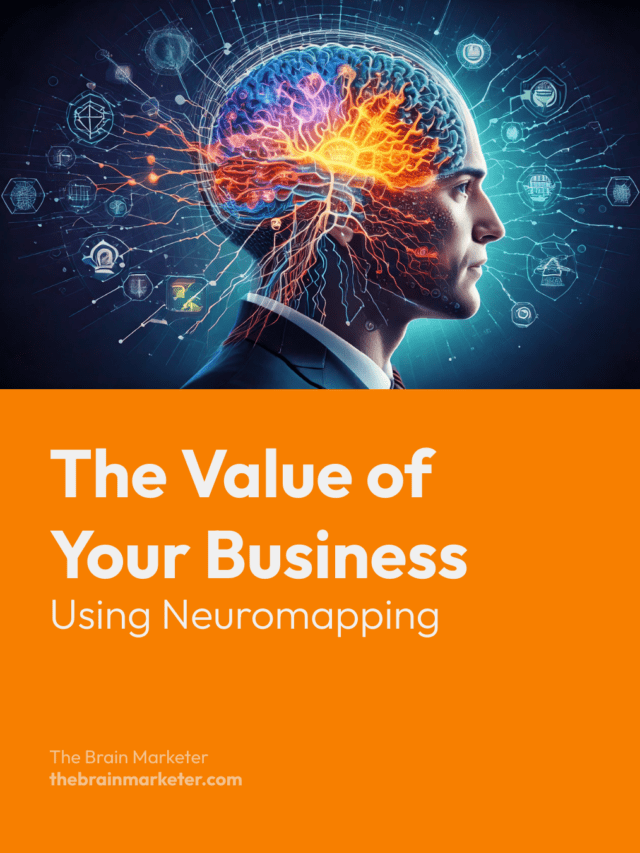Introduction
To convince customers of the value of your business, it is not enough to simply talk about the benefits—you must demonstrate them in tangible ways. The primal brain, which drives much of human decision-making, responds best to concrete, visible evidence that reassures the customer about the safety and effectiveness of your solution. This article explores how to use neuromapping techniques to demonstrate the impact of your product or service, ensuring that the value you bring to your clients is clear and compelling.
🎙️ Unpack the Topic with this Podcast
Why Demonstrating Value Is Critical
The primal brain is focused on survival, which means it responds strongly to elements that provide a sense of safety, benefit, and uniqueness. For your solution to resonate with potential customers, you must show, not just tell, how it provides a unique resolution to their most pressing frustrations.
- Tangible Evidence: The primal brain needs concrete proof. Words are not enough—you must provide visuals, data, and personal experiences that make the value clear.
- Feeling Secure: The customer needs to feel that your solution is safe and will address their needs reliably. The brain wants to see that choosing your product will provide comfort and relieve frustration.
Example: Instead of just saying your product is “affordable” and “fast,” you should also provide testimonials, before-and-after scenarios, or demonstrations to show these qualities in action.
Techniques to Demonstrate the Value of Your Business
Neuromapping Techniques
Neuromapping involves creating mental associations that help the consumer understand and remember your product’s value. By focusing on creating a positive experience and clear positioning in the consumer’s mind, you can reinforce the key attributes of your brand.
Example: If you want to position your brand as “cost-effective” and “quick to deliver,” you should use visual stimuli, such as graphics that illustrate savings in money or time, and include customer testimonials that confirm these claims.
How to Use Neuromapping:
- Show Tangible Benefits: Highlight how your solution helps the customer to “survive” or thrive. The primal brain needs to understand how your product makes life better or safer.
- Appeal to Emotion and Logic: Use a combination of emotional appeals (such as comfort, pride, or relief) with logical arguments to strengthen the connection.
Three Categories of Value to Demonstrate
When demonstrating the value of your product or service, it is useful to categorize the benefits into three main areas. Each of these categories addresses different needs that resonate with the consumer’s brain and decision-making process.
1. Financial Value
Financial benefits are concrete and measurable returns that your solution brings to the client, such as cost savings or increased revenue.
- Example: You could demonstrate how your product saves the customer CHF 500 annually or increases their sales by 20%. This concrete evidence speaks directly to the brain’s need for tangible benefits.
2. Strategic Value
Strategic value relates to improving operational aspects of the client’s business, such as better quality or shorter delivery times. It shows how your solution helps the client improve efficiency or effectiveness.
- Example: You could demonstrate how using your product reduces delivery times by 30%, allowing customers to respond faster to market demand.
3. Personal Value
Personal value focuses on how your product improves the consumer’s personal experience, emotions, or well-being. This value can include improved emotions, greater peace of mind, or even a sense of pride in their purchase.
- Example: If your product reduces stress for the consumer, you should demonstrate this by sharing testimonials or stories that highlight how customers feel more relaxed or satisfied after using your product.
Positioning the Brand in the Customer’s Mind
To ensure that your brand occupies a strong position in the customer’s mind, it is important to create positive mental associations. These associations should align with the attributes you want the consumer to remember about your brand.
Three Key Points for Positioning:
- Client Experience: Make sure the customer’s personal experience with your product reflects your brand promises.
- Consistent Messaging: Use consistent messaging across all channels to reinforce these associations.
- Visualization: Use visuals that evoke the desired emotions and associations. For example, if you want to be seen as reliable, use symbols like shields or locks to convey security.
Example: When presenting a new feature of your product, include a visual that highlights a clear before-and-after scenario, showing how the customer’s life or business is improved thanks to your solution.
Effective Proof Points to Strengthen Your Message
To further convince your potential customers, you should use different types of proof points to strengthen your message:
- Testimonials: Testimonials from satisfied customers provide social proof and are particularly powerful for the primal brain, which seeks comfort in what others have already experienced.
- Effectiveness: 80-100%
- Visual Demonstrations: Demonstrations are especially impactful when they involve clear visuals, such as graphics or videos showing the solution in action.
- Effectiveness: 60-100%
- Comparisons: Comparing your product to others in the market helps to create contrast and highlights your unique selling points. This approach appeals to the primal brain’s need for clear differentiation.
- Effectiveness: 40-80%
- Data and Numbers: While not as impactful on an emotional level, data can be useful for supporting logical decision-making.
- Effectiveness: 20-60%
Example: You could present data that shows a 20% reduction in time spent on daily tasks after using your product, supported by testimonials and before-and-after visuals.
Conclusion
Demonstrating the value of your product or service is essential for winning the trust of customers and proving your business impact. By using neuromapping techniques, focusing on the financial, strategic, and personal benefits, and providing concrete proof points such as testimonials, visuals, and data, you can appeal to the primal brain and make your value clear. Remember, it’s not enough to just talk about the benefits—you must show them in a way that resonates emotionally and logically with your audience.

Vincent Heimann is a marketing project manager and neuromarketing enthusiast. He founded The Brain Marketer to bridge neuroscience and marketing through accessible, science-based content. With over 10 years of experience in digital strategy, UX/UI and communication, he shares practical insights to help brands connect with the human brain — ethically and effectively

